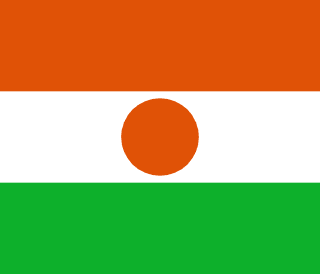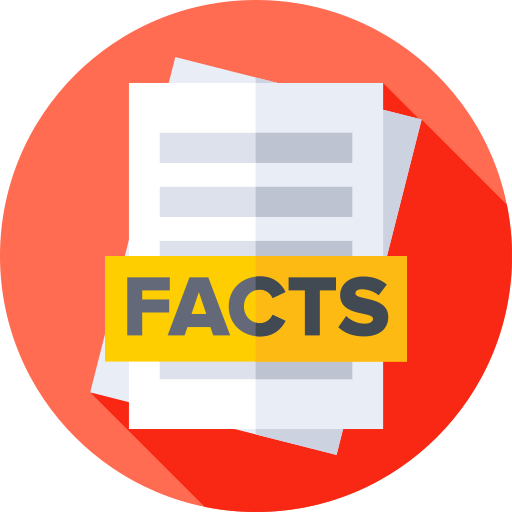Niger - Geography

Here, let us take a look at the Geography of Niger. Landlocked; one of the hottest countries in the world; northern four-fifths is desert, southern one-fifth is savanna, suitable for livestock and limited agriculture. Mother's mean age at first birth is 18.5 years (2012 est.) (Note: data represents median age at first birth among women 20-49), whereas, the Maternal mortality ratio is 441 deaths/100,000 live births (2020 est.)
Geographical data of Niger
| Location | Western Africa, southeast of Algeria |
|---|---|
| Geographic coordinates | 16 00 N, 8 00 E |
| Map references | Africa |
| Tarrain | predominately desert plains and sand dunes; flat to rolling plains in south; hills in north |
| Natural Resources | uranium, coal, iron ore, tin, phosphates, gold, molybdenum, gypsum, salt, petroleum |
| Natural Hazards | recurring droughts |
| Irrigated Land | 2,881 sq km (2022) |
| Major rivers (by length in km) | Niger (shared with Guinea [s], Mali, Benin, and Nigeria [m]) - 4,200 km note – [s] after country name indicates river source; [m] after country name indicates river mouth |
| Major aquifers | Lake Chad Basin, Lullemeden-Irhazer Basin, Murzuk-Djado Basin |
| Land Boundaries | 5,834 km |
| Border Countries | Algeria 951 km; Benin 277 km; Burkina Faso 622 km; Chad 1,196 km; Libya 342 km; Mali 838 km; Nigeria 1,608 km |
| Coastline | 0 km (landlocked) |
| Climate | desert; mostly hot, dry, dusty; tropical in extreme south |
| Area | |
| Total Area | |
| Land Area | 1,266,700 sq km |
| Water Area | 300 sq km |
| comparative Area | slightly less than twice the size of Texas |
| Maritime Claims | |
| Elevations | |
| Highest point | Idoukal-n-Taghes 2,022 m |
| Lowest point | Niger River 200 m |
| Mean elevation | 474 m |
| Land Use | |
| Agricultural land | 36.8% (2022 est.) |
| Agricultural land: arable land | arable land: 14% (2022 est.) |
| Agricultural land: permanent crops | permanent crops: 0.1% (2022 est.) |
| Agricultural land: permanent pasture | permanent pasture: 22.7% (2022 est.) |
| Forest | 0.8% (2022 est.) |
| Other | 62.4% (2022 est.) |
Population Distribution
Majority of the populace is located in the southernmost extreme of the country along the border with Nigeria and Benin as shown in this population distribution map
People and Society
In Niger, the different Ethnic groups are such that we have: Hausa 53.1%, Zarma/Songhai 21.2%, Tuareg 11%, Fulani (Peuhl) 6.5%, Kanuri 5.9%, Gurma 0.8%, Arab 0.4%, Tubu 0.4%, other/unavailable 0.9% (2006 est.)
| Population | |
|---|---|
| Pop growth rate | 3.66% (2024 est.) |
| Birth rate | 46.6 births/1,000 population (2024 est.) |
| Death rate | 9.5 deaths/1,000 population (2024 est.) |
| Health expenditure | 5.8% of GDP (2021) |
| Physicians Density | |
| Hospital bed Density | 0.4 beds/1,000 population (2017) |
| Total fertility rate | 6.64 children born/woman (2024 est.) |
| Gross reproduction rate | 3.27 (2024 est.) |
| Contraceptive prevalence rate | 11% (2021) |
| Est married women (ages 15-49) | 80.3% (2023 est.) |
| Literacy | age 15 and over can read and write |
| Education expenditures | 3.8% of GDP (2020 est.) |
| Net Migration rate | -0.6 migrant(s)/1,000 population (2024 est.) |
| Nationality | Nigerien | Nigerien(s) |
| Languages | Hausa, Zarma, French (official), Fufulde, Tamashek, Kanuri, Gurmancema, Tagdal |
| Religions | Muslim 95.5%, ethnic religionist 4.1%, Christian 0.3%, agnostics and other 0.1% (2020 est.) |
| Age Structure | |
| 0-14 years | 49.5% (male 6,567,460/female 6,463,877) |
| 15-64 years | 47.8% (male 6,146,355/female 6,451,574) |
| 65 years and over | 2.7% (2024 est.) (male 342,388/female 371,130) |
| Dependency Ratios | |
| Total dependency ratio | 105.4 |
| Youth dependency ratio | 100.4 |
| Elderly dependency ratio | 5 |
| Potential support ratio | 20.1 (2021 est.) |
| Median Age | |
| Total | 15.2 years (2024 est.) |
| Male | 14.9 years |
| Female | 15.6 years |
| Urbanization | |
| Urban population | 17.1% of total population (2023) |
| Rate of urbanization | 4.72% annual rate of change (2020-25 est.) |
| Major urban areas (Pop) | 1.437 million NIAMEY (capital) (2023). |
| Sex Ratio | |
| At birth | 1.03 male(s)/female |
| 0-14 years | 1.02 male(s)/female |
| 15-64 years | 0.95 male(s)/female |
| 65 years and over | 0.92 male(s)/female |
| Total population | 0.98 male(s)/female (2024 est.) |
| Infant Motality | |
| Total | 64.3 deaths/1,000 live births (2024 est.) |
| Male | 69.2 deaths/1,000 live births |
| Female | 59.2 deaths/1,000 live births |
| Life Expectancy at birth | |
| Total population | 60.9 years (2024 est.) |
| Male | 59.3 years |
| Female | 62.5 years |
| Drinking Water Sources | |
| Improved: urban | urban: 95.8% of population |
| Improved: rural | rural: 63.1% of population |
| Improved: total | total: 68.6% of population |
| Unimproved: urban | urban: 4.2% of population |
| Unimproved: rural | rural: 36.9% of population |
| Unimproved: total | total: 31.4% of population (2020 est.) |
| Sanitation facility acess | |
| Improved: urban | urban: 81.9% of population |
| Improved: rural | rural: 13.5% of population |
| Improved: total | total: 24.8% of population |
| Unimproved: urban | urban: 18.1% of population |
| Unimproved: rural | rural: 86.5% of population |
| Unimproved: total | total: 75.2% of population (2020 est.) |
| Alcohol consumption per capita | |
| Total | 0.11 liters of pure alcohol (2019 est.) |
| Beer | 0.04 liters of pure alcohol (2019 est.) |
| Wine | 0.01 liters of pure alcohol (2019 est.) |
| Spirits | 0.06 liters of pure alcohol (2019 est.) |
| Other alcohols | 0 liters of pure alcohol (2019 est.) |
| Tobacco use | |
| Total | 7.4% (2020 est.) |
| Male | 13.7% (2020 est.) |
| Female | 1.1% (2020 est.) |
Demographic profile
All Important Facts about Niger
Want to know more about Niger? Check all different factbooks for Niger below.









